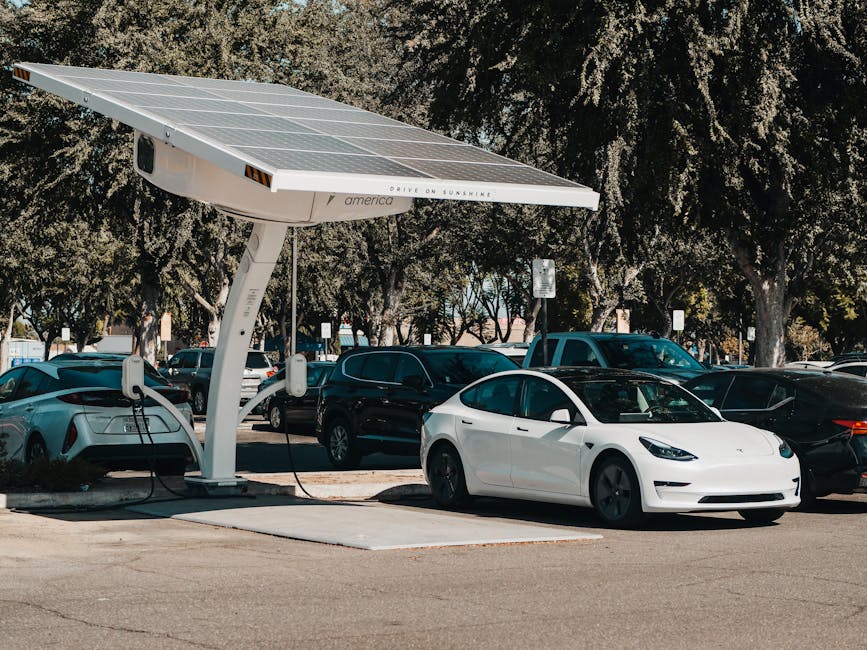The Rise of Digital Advertising in Electric Vehicle Charging Stations: A Market Evolution

The Rise of Digital Advertising in Electric Vehicle Charging Stations: A Market Evolution
As the world grapples with the urgent need for sustainable transportation solutions, electric vehicles (EVs) have surged into the spotlight. This transformative shift isn't just altering how we drive but also where we focus our advertising dollars. The integration of digital advertising at EV charging stations is emerging as a new frontier in the advertising landscape, merging technological innovations with strategic marketing.
The Current Landscape of EV Charging Station Advertising
Digital Transformation: With companies like ChargePoint partnering with GSTV to deploy digital ad networks, EV charging stations are rapidly transforming into lucrative media hubs. These stations offer high-resolution screens displaying dynamic ads, which capitalize on the captive audience that EV charging times create.
Location Strategy: These advertising platforms are predominantly installed at strategic locations such as near retail and grocery stores, harnessing the potential of high consumer dwell times to maximize viewer engagement with brands.
Driving Factors Behind the Adoption of EV Charging Station Ads
Expanding Infrastructure: Recent federal investments, including a $521 million grant, are accelerating the buildout of these networks, especially in underserved regions, fostering an environment ripe for digital advertising growth.
Consumer Behavior: The typical EV driver profile—tech-savvy, environmentally conscious, and with higher disposable income—makes them an ideal target for advertisers looking to pitch products from sustainable brands or tech-forward services.
Comparative Insights: From Gas Pumps to Charging Points
Advertising at gas stations has been prevalent for decades, focusing on traditional signage and small-format digital screens. However, the shift to EV charging points allows for a more interactive and engaging customer experience through features like touchscreens and QR codes, offering a direct link from advertisement to consumer action.
"As we navigate through this green transition, the integration of robust digital advertising networks at EV charging stations isn't just an enhancement of consumer experience—it's a cornerstone in building a sustainable future."
Innovative Advertising Practices at EV Charging Stations
Interactive Campaigns: Advanced platforms at these charging stations facilitate immersive advertising experiences, allowing brands to engage directly with consumers through interactive content and real-time updates.
Synergistic Opportunities: Proximity to retail locations has bred innovative cross-promotions, where QR codes link charging consumers to nearby shopping deals, enhancing foot traffic and sales for local businesses.
Challenges and Strategies for Stakeholders
Addressing Privacy Concerns: With advanced data-driven advertising comes the responsibility of managing privacy. Transparent user consent protocols and robust privacy safeguards are essential to maintain trust and engagement.
Technological Investments: While there are upfront costs associated with installing digital displays, potential subsidies and revenue-sharing models can alleviate financial barriers, making this an attractive option for site hosts.
Conclusion: Envisioning the Future of EV Charging Station Advertising
The strategic incorporation of digital advertising into EV charging stations offers a dual benefit: it revolutionizes out-of-home advertising while promoting sustainable transportation. As EV adoption continues to climb, the potential for these platforms only enlarges, promising significant returns for both advertisers and site hosts. Stakeholders across the spectrum, from policymakers to business owners, must recognize and harness this potential to drive not just economic but environmental value, paving the way for a greener, technology-driven future.
This evolution isn't merely a trend but a pivotal shift in how advertising interacts with transportation and sustainability, marking a profound impact on societal and consumer behaviors worldwide.
